Auctions
George Daniels (1926 –2011): An Appreciation
Auctions
George Daniels (1926 –2011): An Appreciation
Curiously, his fame seems to be regional, Daniels being known outside of Great Britain primarily among collectors of the uppermost echelons who covet his few creations. His pocket watches and wristwatches are frighteningly scarce because he was, as a general consensus agrees, the sole individual of the modern era capable of fashioning by hand every single component, including dials and hands. This rarefied skill set has been taken up by the watchmaker he mentored, Roger W. Smith, whose own timepieces owe much to Daniels’ philosophy.

George Daniels
While the Co-axial Escapement will probably be regarded by future historians as his greatest achievement, followed by the nurturing of the talent of Smith, whose own maison is now firmly established, Daniels’ story contains much more. His success in sustaining the craft of watchmaking during an era when electronics threatened its demise, ranks in importance with the labours of those who maintained the commercial viability of the mechanical timepiece. Thus the name “Daniels” must also be included when citing Blumlein, Hayek, Gerd Lang and others who kept the faith.
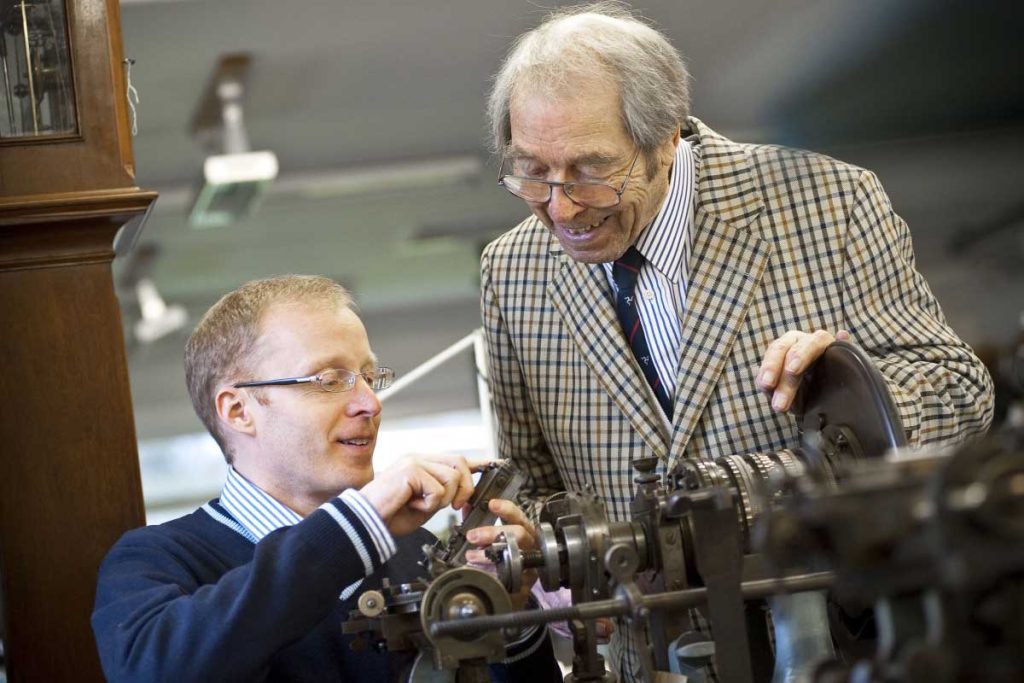
George Daniels and Roger W. Smith
His canon of written works includes Watches (1965) co-authored with Cecil Clutton; English and American Watches (1966); his masterpiece The Art of Breguet (1974), which kept alive the greatest name in the history of watchmaking; Clocks & Watches in the Collection of the Worshipful Company of Clockmakers, also co-authored with Clutton (1975) and two volumes which are found on the shelves of just about every watchmaker alive today: Watchmaking (1981, revised in 2011) and The Practical Watch Escapement (1994).
Fans of Daniels often forget this aspect of his life, beyond his recognition in Smith of one who could carry on his work. I am reminded of an anecdote told by a colleague who was a lecturer in horology, who invited Daniels to address his students. Daniels arrived via motorcycle, in full leathers, under which he wore his familiar tweed jacket. From each pocket, he produced timepieces he had made himself, for the students to study. The point his arrival made, beyond being an expression of his irrepressible character, was that his precious creations survived the rigours of a motorcycle journey.
As an aside, it should be remembered that Daniels’ passion for watches ran parallel to a passion for classic cars. After his passing in 2011, his collection was sold at Bonhams, and the mouth-watering list included unique and historically-important models. Among them were the legendary 1908 Itala 100hp Grand Prix Car that won the 1908 French Grand Prix, a 1954 Bentley R-Type Continental Fastback, a 1929 4½-litre Bentley Tourer, the 1907 Daimler 45 hp Roi-de-Belges Tourer built for the Earl of Craven, a 1929–32 Bentley 4½-Litre Supercharged Single-Seater known to enthusiasts as “Bentley Blower No.1” and developed and driven by Sir Henry “Tim” Birkin, and Birkin’s 1932 Alfa Romeo 8C 2300 Le Mans Works car.
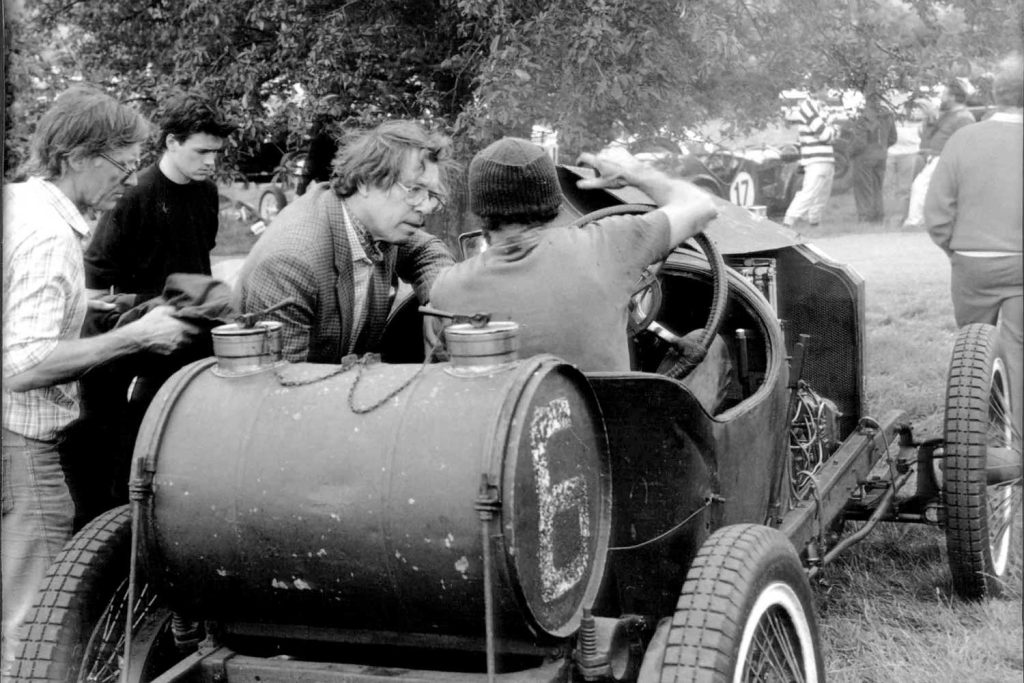
George Daniels at Prescott Hill
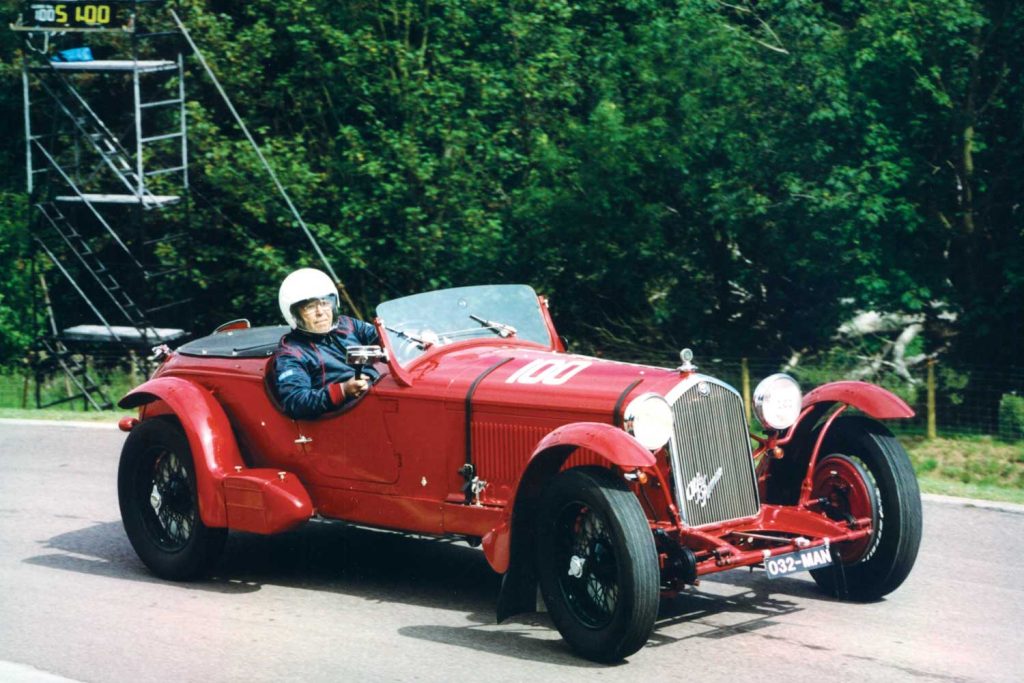
Daniels in his 1932 Alfa Romeo 8C 2300
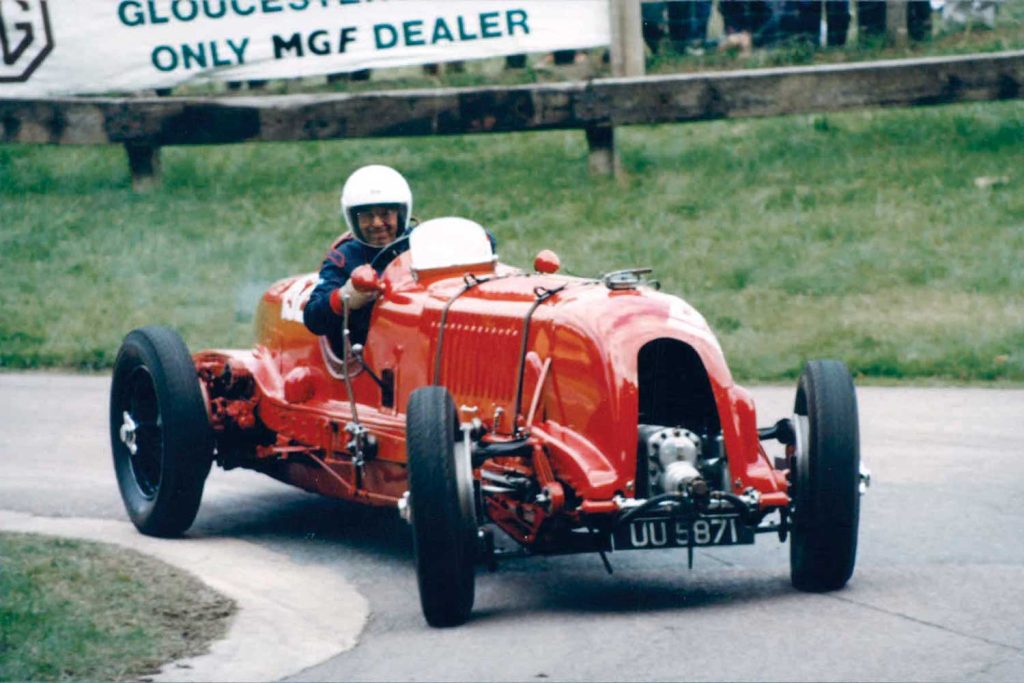
Daniels driving his “blower” Bentley at Prescott Hill
To truly appreciate this output, one should waste no time in purchasing a copy of Michael Clerizo’s definitive study, George Daniels – A Master Watchmaker & His Art (Thames & Hudson, London, 2013), reviewed here. A visually enthralling companion to Daniels’ own account of his life, this lavish tome enables the enthusiast to study all of Daniels’ timepieces, through breathtaking photography and with detailed descriptions.
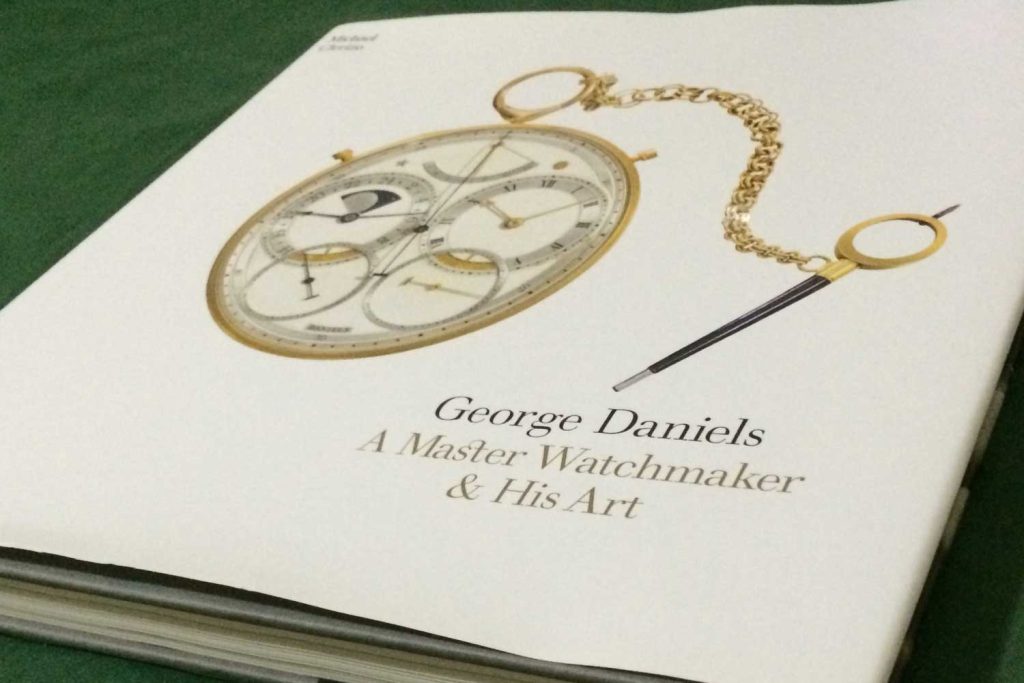
George Daniels – A Master Watchmaker & His Art (Thames & Hudson, London, 2013)
Inevitably, though, we must return to the Co-axial Escapement, which Daniels devised in 1974 and patented in 1980. For a variety of reasons – cynics point to a xenophobic Swiss abhorrence of any new, “not invented here” developments – it took Daniels nearly two decades to see the escapement appear in serial-production timepieces from a major maker.
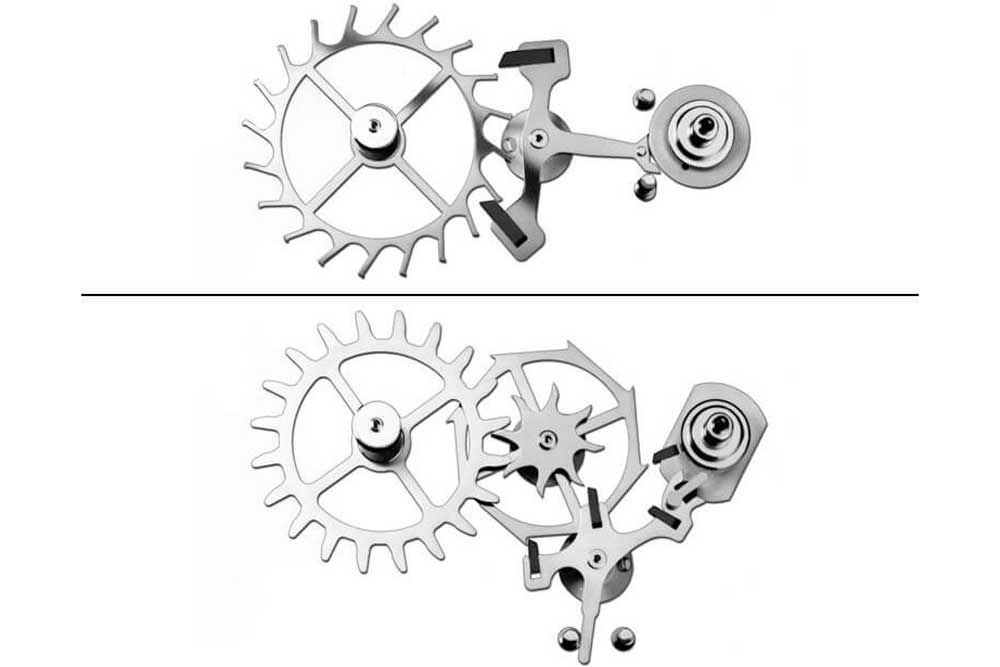
Swiss lever escapement (top) and Co-Axial escapement (bottom)










